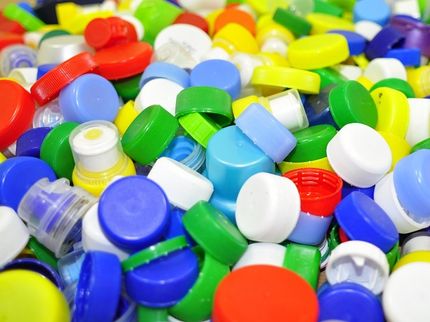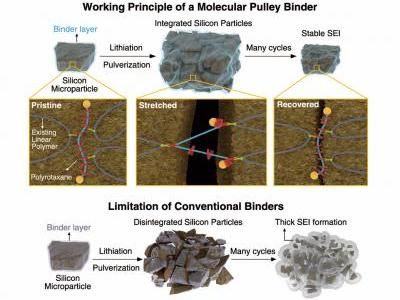Miniature Doughnuts: Colloid Crystals as Molds for Nanorings
Engineers and scientists are fascinated by the apparently near-magical properties of ring-shaped objects. For example, magnetic fields can induce a permanent eddy current in conducting rings, and a tricky mixture of rods and rings act as coils and antenna and thus lead to materials with amazing optical properties, like negative refractive indices. These phenomena are size dependent. Especially when the rings are meant to interact with visible light, it is necessary to control their size at the sub-micrometer level.
Werner Goedel and Feng Yan from the Technical University in Chemnitz have developed a new 'three-dimensional' strategy in which crystals act as a sort of mold for the production of rings. First, micrometer-sized spheres are slurried in a solvent and, by centrifuging, pressed in form of regularly packed so-called colloid crystal. This just has to be dried and the 'mold' is complete. In the next step, the scientists infiltrate the mold with a polymer solution, such as polystyrene in chloroform. Their special trick is to only partially fill the form. The liquid then doesn't sink to the bottom; instead, it creeps into the tiny crevices around the contact points between the spheres and collects in the form of little rings. This phenomenon is caused by capillary forces. If the solvent is then evaporated, the polystyrene stays behind in the crevices as a solid. In the final step, the researchers dissolve the spheres. The tiny polystyrene rings of uniform shape and size left behind are reminiscent of doughnuts. The rings can be made of a number of different materials and their size can be varied by changing the diameter of the spheres that are used. The researchers were thus able to produce mini-'doughnuts' of different polymers and ceramics and vary the outer diameter between about 400 nm and 150 nm and the inner diameter between 150 and 50 nm.
"Our new process is also very interesting," says Goedel, "because we do not produce the little rings conventionally one by one on a flat support, but all at once in a three-dimensional mold. This new method dramatically improves the space-time yield."
Most read news
Other news from the department science
These products might interest you

Eclipse by Wyatt Technology
FFF-MALS system for separation and characterization of macromolecules and nanoparticles
The latest and most innovative FFF system designed for highest usability, robustness and data quality

Spinsolve Benchtop NMR by Magritek
Spinsolve Benchtop NMR
Spinsolve is a revolutionary multinuclear NMR spectrometer that provides the best performance

HYPERION II by Bruker
FT-IR and IR laser imaging (QCL) microscope for research and development
Analyze macroscopic samples with microscopic resolution (5 µm) in seconds

Get the chemical industry in your inbox
By submitting this form you agree that LUMITOS AG will send you the newsletter(s) selected above by email. Your data will not be passed on to third parties. Your data will be stored and processed in accordance with our data protection regulations. LUMITOS may contact you by email for the purpose of advertising or market and opinion surveys. You can revoke your consent at any time without giving reasons to LUMITOS AG, Ernst-Augustin-Str. 2, 12489 Berlin, Germany or by e-mail at revoke@lumitos.com with effect for the future. In addition, each email contains a link to unsubscribe from the corresponding newsletter.


























































